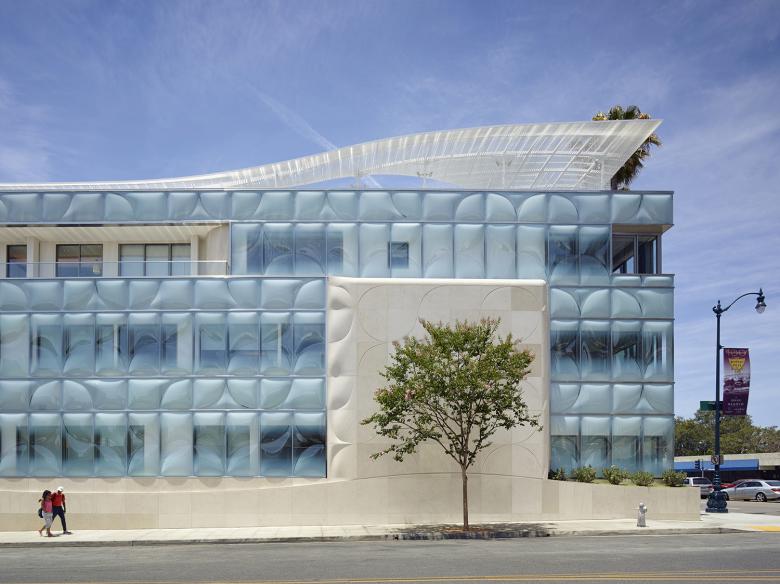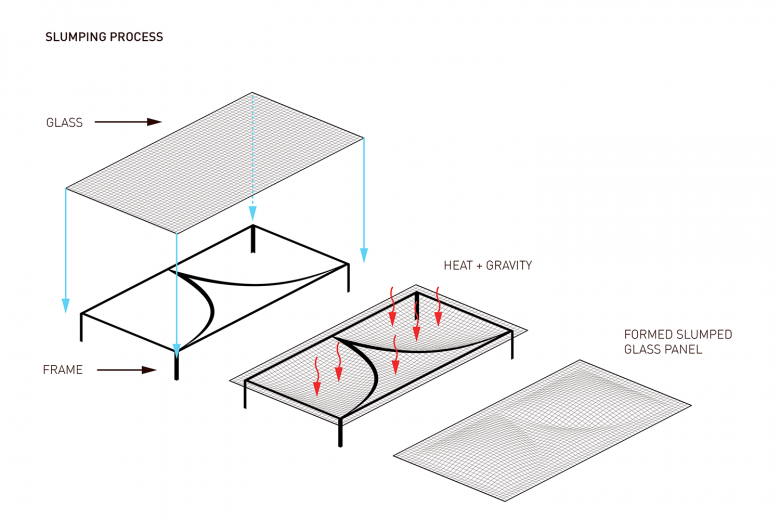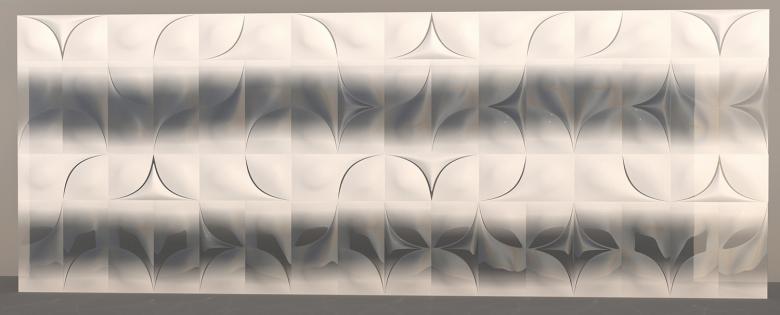Out of the Slump
In a definitive break with the cookie-cutter modernism and faux-classicism that dominates Beverly Hills, California, Belzberg Architects have transformed a nondescript office building into an absolute showstopper, wrapping its three-story façade in a quilt of slumped glass and sculpted stone.
Project: The Gores Group Headquarters
Location: Beverly Hills, California, USA
Architect: Belzberg Architects
Manufacturers: Vitro Architectural Glass (formerly PPG) and SentryGlas Expressions
Product: Slumped glazing with custom printed interlayers
Fabricators: Pulp Studio and California Glass Bending
Contractor: Tatum Construction
Building Area: 135,000 sf (12,542 m2)
The Gores Group, a global investment firm specializing in multibillion-dollar mergers and acquisitions, is headquartered in a surprisingly whimsical building in downtown Beverly Hills, on the corner of Wilshire and Santa Monica Boulevards. Designed by Belzberg Architects, the newly renovated complex, which was formerly a boxy, 1960s-era building and detached parking garage, encompasses 135,000 square feet of office space, complete with two rooftop terraces that look out on the Santa Monica Mountains. The best views, however, are down on the street level where, amongst the bustle of traffic and tourists, the undulant glass façades appear to dance in the California sunshine.
The façade comprises three layers of glass — the curved, double-glazed exterior and the flat, single-glazed interior — separated by an air cavity of variable depth. To maximize natural light, the architects specified Starphire Ultra-Clear, a low-iron glazing by Vitro Architectural Glass. The sheets for the exterior were shipped to Pulp Studio and California Glass Bending, two local fabricators specializing in curved glass, where they were laminated in pairs and then slumped in kilns over custom bent steel frames.
By relying on reusable forms to shape the panels, a process which Professor Dana K. Gulling has termed "customized repetitive manufacturing," or CRM, the architects were able to produce unique façade components while still benefiting from the "economics of repetitive manufacturing … reducing material and fabrication costs." Here, as Professor Gulling noted, the use of metal frames, rather than full ceramic molds, also significantly reduced post-production costs and resulted in a sleeker, flame-kissed finish.
There are three panel modules, each measuring 4 feet by 8 feet, repeated randomly across the façades to create the irregular, tufted appearance. The motif is further complicated by the insertion of custom printed PVB (polyvinyl butyral) interlayers, featuring a dozen variations of warped grid patterns, which accentuate the shape of the glass while reducing solar heat gain.
In addition to their stunning visual impact, the bulbous glass surfaces resolve a number of functional concerns. First, they strengthen the façade against vibrations, preventing noise from the busy intersection interfering with the firm’s day-to-day business. Second, they add volume to the internal air cavity, converting it into an energy efficient thermal chimney, which ventilates the building in the summer and allows hot air to naturally recirculate in the winter.
The influence of this bespoke glasswork on the design process is evident throughout the exterior finishes. Its curves are echoed by the sculptural limestone cladding, which was carved by CNC machines and polished smooth by hand. Similarly, the roof terraces are crowned by white canopies of water jet perforated aluminum, which recall the delicate, lacelike qualities of the laminated glass interlayers.








